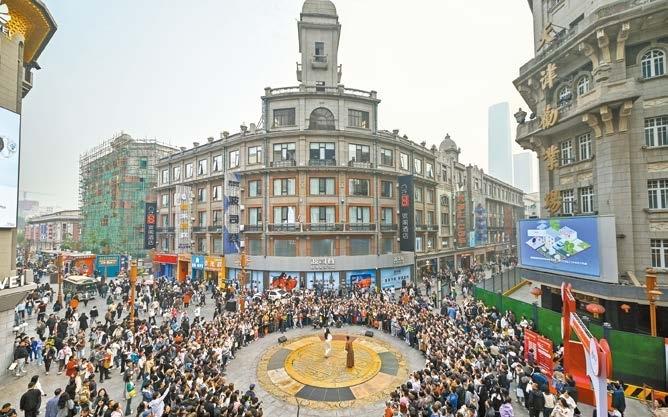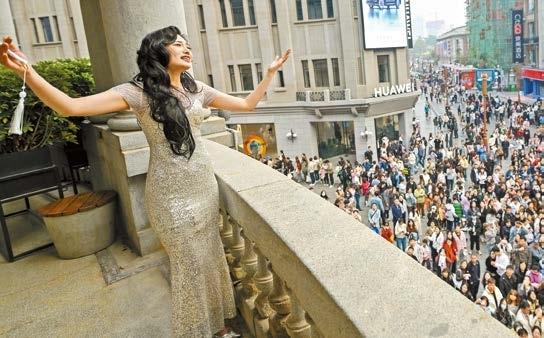

IN the bustling heart of the historic Jinjie commercial district in Tianjin, the rhythmic clatter of a rickshaw and the elegant swish of a qipao-clad socialite’s fan whisked the audience away to the ambiance of 1930s China. Here, a groundbreaking adaptation of renowned Chinese playwright Cao Yu’s seminal work “Sunrise” unfolded — not on a traditional stage — but amid the cobblestones and colonnades where its story was first conceived. Set in the 1930s, the play reveals the stark contrast between the decadent lifestyle of the privileged elite and the harsh struggles of the underprivileged in that historical period, blending a poignant critique of systemic inequality with a hopeful vision for a better future. Since its debut in October 2024, this immersive street-corner production by the Tianjin People’s Art Theater has attracted over 60,000 spectators across more than 30 public holiday performances, redefining how audiences engage with classical theater and how cities harness cultural heritage to boost tourism and revive consumption. Staged near the iconic giant copper coin square and the historic site of Huizhong Hotel — the original setting of the play — the production dissolved the boundary between performers and spectators. Audience members were invited to dress as rickshaw pullers or thugs and speak improvise lines, creating an immersive experience that emphasized interactivity and made every spectator an integral part of the performance. “Experiencing the play in its actual historical setting creates powerful verisimilitude, giving the audience an unparalleled sense of immersion,” said Lu Sen, director of the production. Tracing its roots to the early-mid 20th century, immersive theater redefined performance spaces, from repurposed factories to urban streetscapes, by making environmental engagement and audience interaction its central artistic tenets. Performing in this immersive street production presented unique challenges, said Xu Nuo, an actress in the play. “With audiences surrounding us 360 degrees, every flicker of emotion becomes visible,” she said, adding that they had to live their roles more intensely than on conventional stages, while continuously engaging spectators. Not far from giant copper coin square, Riverside 66, a luxury mall owned by Hong Kong-based Hang Lung Properties, was transformed into an immersive theater, hosting multiple performances of “Sunrise.” Tenants joined in with promotions, turning theater-going into a vibrant blend of shopping and cultural experience. Scholars view this participatory wave as part of a broader generational shift, with younger audiences increasingly seeking immersive experiences over passive consumption. Social media is amplifying the trend. For instance, on Xiaohongshu, posts tagged “cultural tourism” have surpassed 50 million views, with interactive cultural activities and hands-on intangible heritage experiences emerging as popular trends. Each performance of the immersive “Sunrise” is livestreamed, drawing a massive online audience. “I was completely captivated, and I hope more people know about this production,” echoed viewers on social media. (Xinhua) | 
